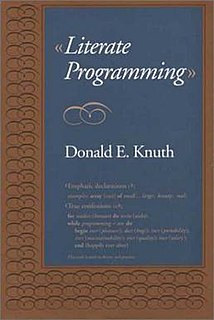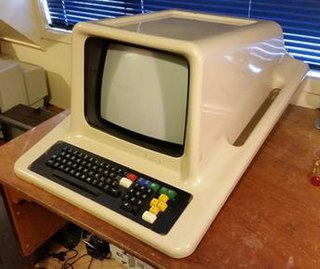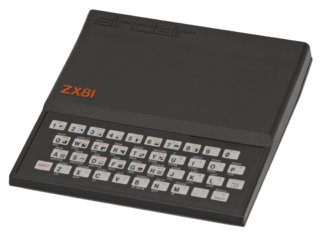 W
W3D printing, or additive manufacturing, is the construction of a three-dimensional object from a CAD model or a digital 3D model. The term "3D printing" can refer to a variety of processes in which material is deposited, joined or solidified under computer control to create a three-dimensional object, with material being added together, typically layer by layer.
 W
WThe Aamber Pegasus is a home computer first produced in New Zealand in 1981 by Technosys Research Labs.
 W
WThe Acorn Atom is a home computer made by Acorn Computers Ltd from 1980 to 1982, when it was replaced by the BBC Micro. The Micro began life as an upgrade to the Atom, originally known as the Proton.
 W
WThe ProFile was the first hard disk drive produced by Apple Computer, initially for use with the Apple III personal computer. The original model had a formatted capacity of 5 MB and connected to a special interface card that plugged into an Apple III slot. In 1983, Apple offered a ProFile interface card for the Apple II, with software support for Apple ProDOS and Apple Pascal.
 W
WThe Color Graphics Adapter (CGA), originally also called the Color/Graphics Adapter or IBM Color/Graphics Monitor Adapter, introduced in 1981, was IBM's first color graphics card for the IBM PC and established a de-facto computer display standard.
 W
WGaleb was an 8-bit computer developed by the PEL Varaždin company in Yugoslavia in the early 1980s. A grand total of 250 were produced by the end of the summer of 1984, before being replaced by Orao.
 W
WThe Monochrome Display Adapter is IBM's standard video display card and computer display standard for the PC introduced in 1981. The MDA does not have any pixel-addressable graphics modes, only a single monochrome text mode which can display 80 columns by 25 lines of high resolution text characters or symbols useful for drawing forms.
 W
WThe IBM Personal Computer is the first computer released in the IBM PC model line and the basis for the IBM PC compatible de facto standard. Released on August 12, 1981, it was created by a team of engineers and designers directed by Don Estridge in Boca Raton, Florida.
 W
WLiterate programming is a programming paradigm introduced by Donald Knuth in which a computer program is given an explanation of its logic in a natural language, such as English, interspersed with snippets of macros and traditional source code, from which compilable source code can be generated. The approach is used in scientific computing and in data science routinely for reproducible research and open access purposes. Literate programming tools are used by millions of programmers today.
 W
WMikroMikko was a Finnish line of microcomputers released by Nokia Corporation's computer division Nokia Data from 1981 through 1987. MikroMikko was Nokia Data's attempt to enter the business computer market. They were especially designed for good ergonomy.
 W
WThe Movement Drum System I/II was a very rare British-made drum machine produced approximately between 1981 (MKI) and 1983 (MKII).
 W
WThe Osborne 1 is the first commercially successful portable microcomputer, released on April 3, 1981 by Osborne Computer Corporation. It weighs 10.7 kg (24.5 lb), cost US$1,795, and runs the CP/M 2.2 operating system. It is powered from a wall socket, as it has no on-board battery, but it is still classed as a portable device since it can be hand-carried when packed.
 W
WA PC speaker is a loudspeaker built into some IBM PC compatible computers. The first IBM Personal Computer, model 5150, employed a standard 2.25 inch magnetic driven (dynamic) speaker. More recent computers use a tiny moving-iron or piezo speaker instead. The speaker allows software and firmware to provide auditory feedback to a user, such as to report a hardware fault. A PC speaker generates waveforms using the programmable interval timer, an Intel 8253 or 8254 chip.
 W
WThe PC-8800 series , commonly shortened to PC-88, are a brand of Zilog Z80-based 8-bit home computers released by Nippon Electric Company (NEC) in 1981 and primarily sold in Japan.
 W
WThe Poly-1 was a desktop computer designed in New Zealand for educational use.
 W
WThe Quantel Paintbox is a dedicated computer graphics workstation for composition of broadcast television video and graphics. Produced by the now-defunct British production equipment manufacturer Quantel, its design emphasized the studio workflow efficiency required for live news production. At a price of about $150,000 per unit, they were used primarily by large TV networks such as NBC, while in the UK, Peter Claridge's company CAL Videographics was the first commercial company to purchase one. Following its initial launch in 1981, the Paintbox revolutionised the production of television graphics.
 W
WThe Sinclair ZX Printer is a spark printer which was produced by Sinclair Research for its ZX81 home computer. It was launched in 1981, with a recommended retail price of £49.95.
 W
WThe ZX81 is a home computer that was produced by Sinclair Research and manufactured in Dundee, Scotland, by Timex Corporation. It was launched in the United Kingdom in March 1981 as the successor to Sinclair's ZX80 and designed to be a low-cost introduction to home computing for the general public. It was hugely successful; more than 1.5 million units were sold. In the United States it was initially sold as the ZX-81 under license by Timex. Timex later produced its own versions of the ZX81: the Timex Sinclair 1000 and Timex Sinclair 1500. Unauthorized ZX81 clones were produced in several countries.